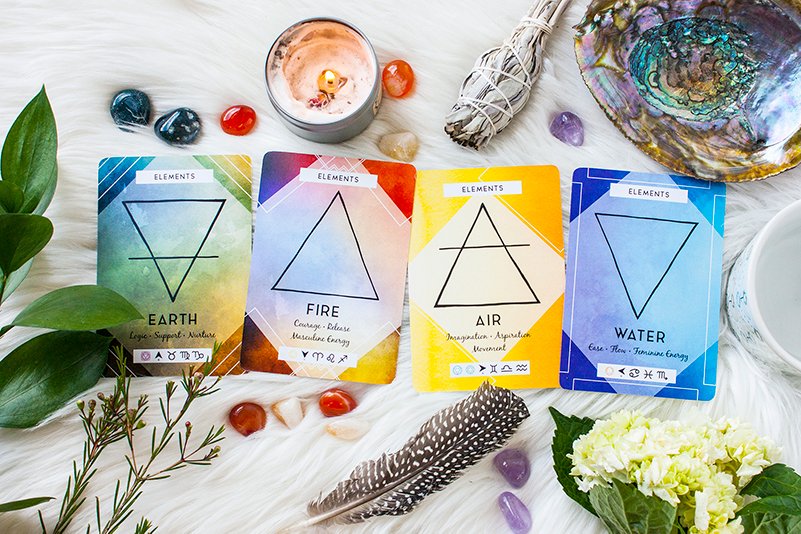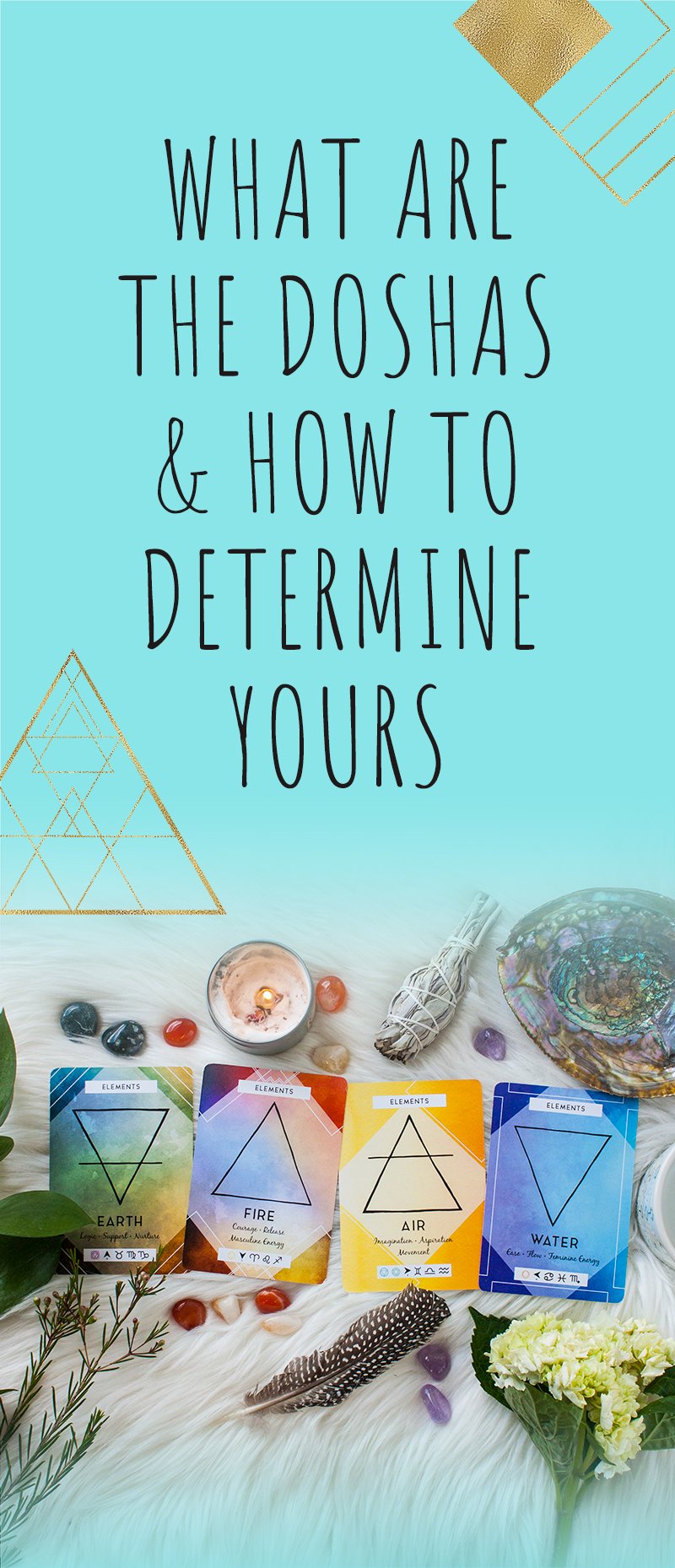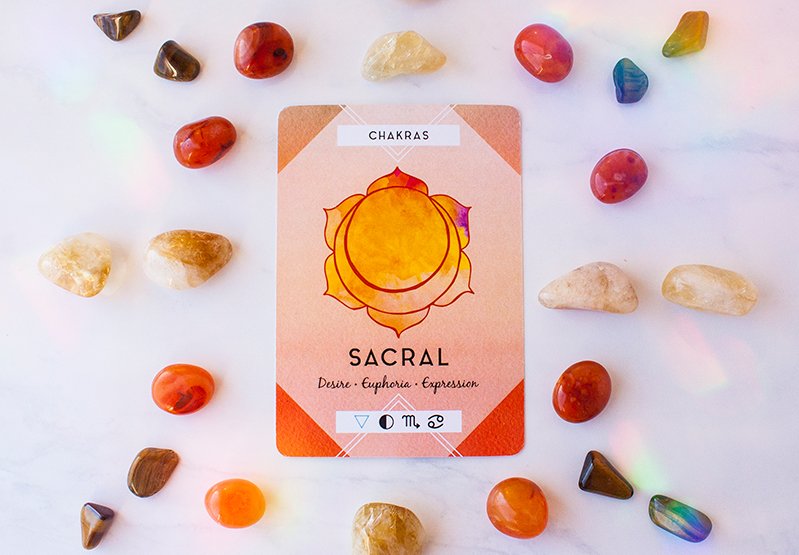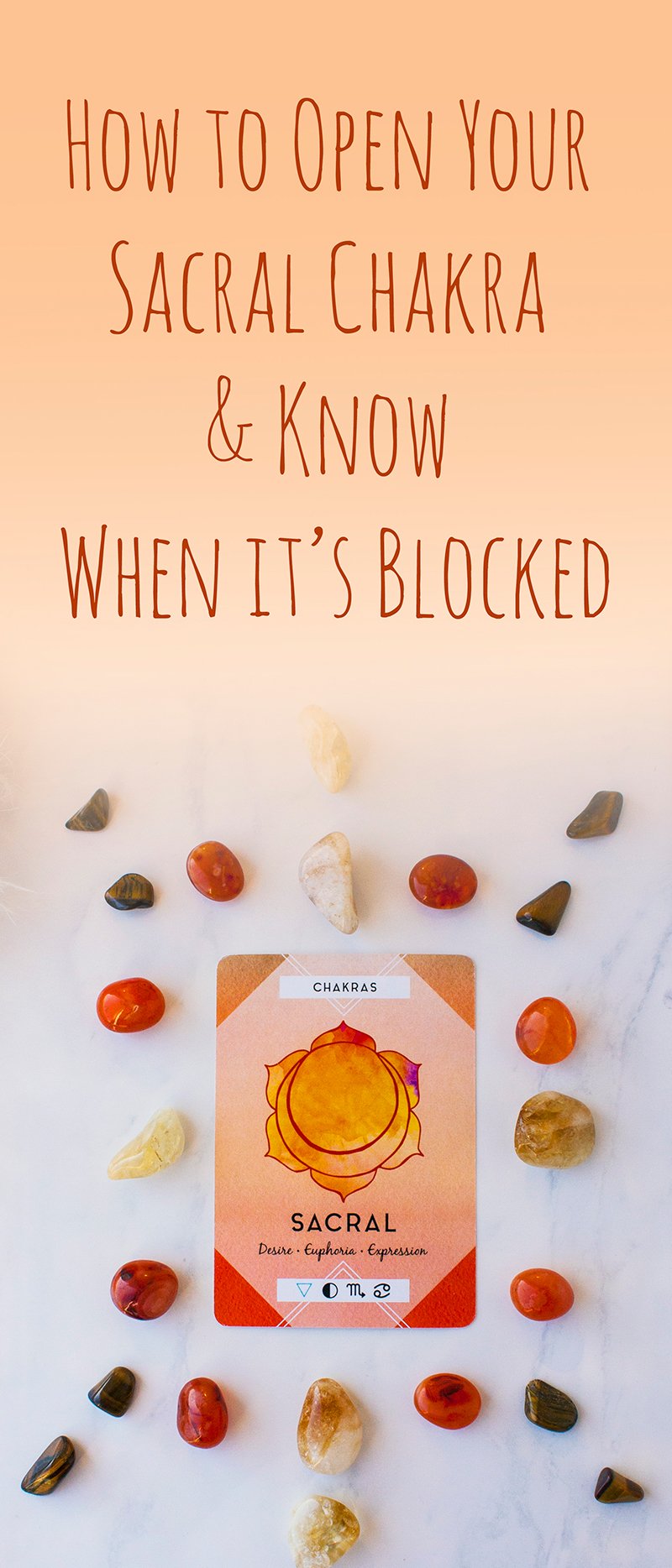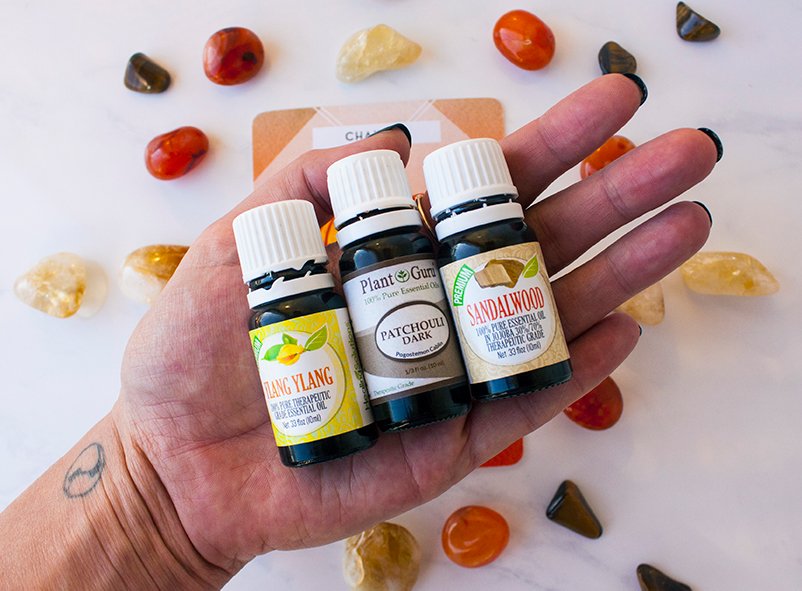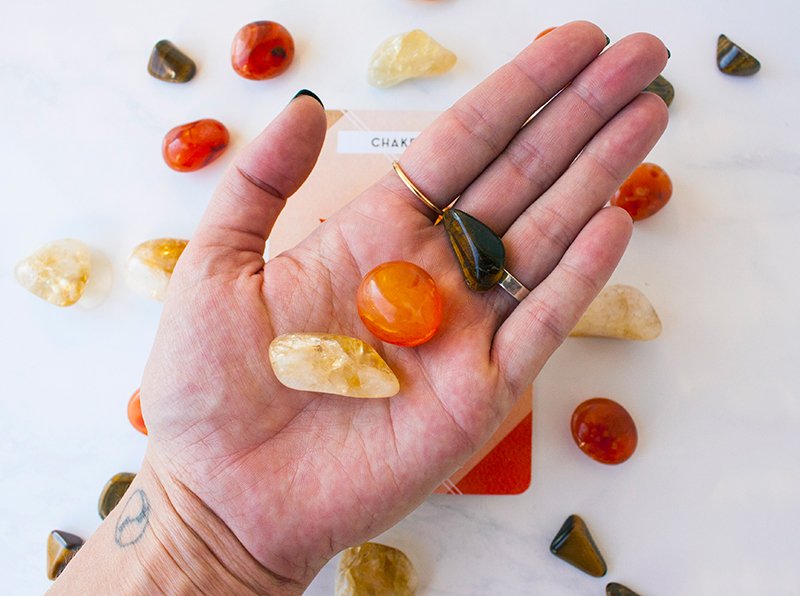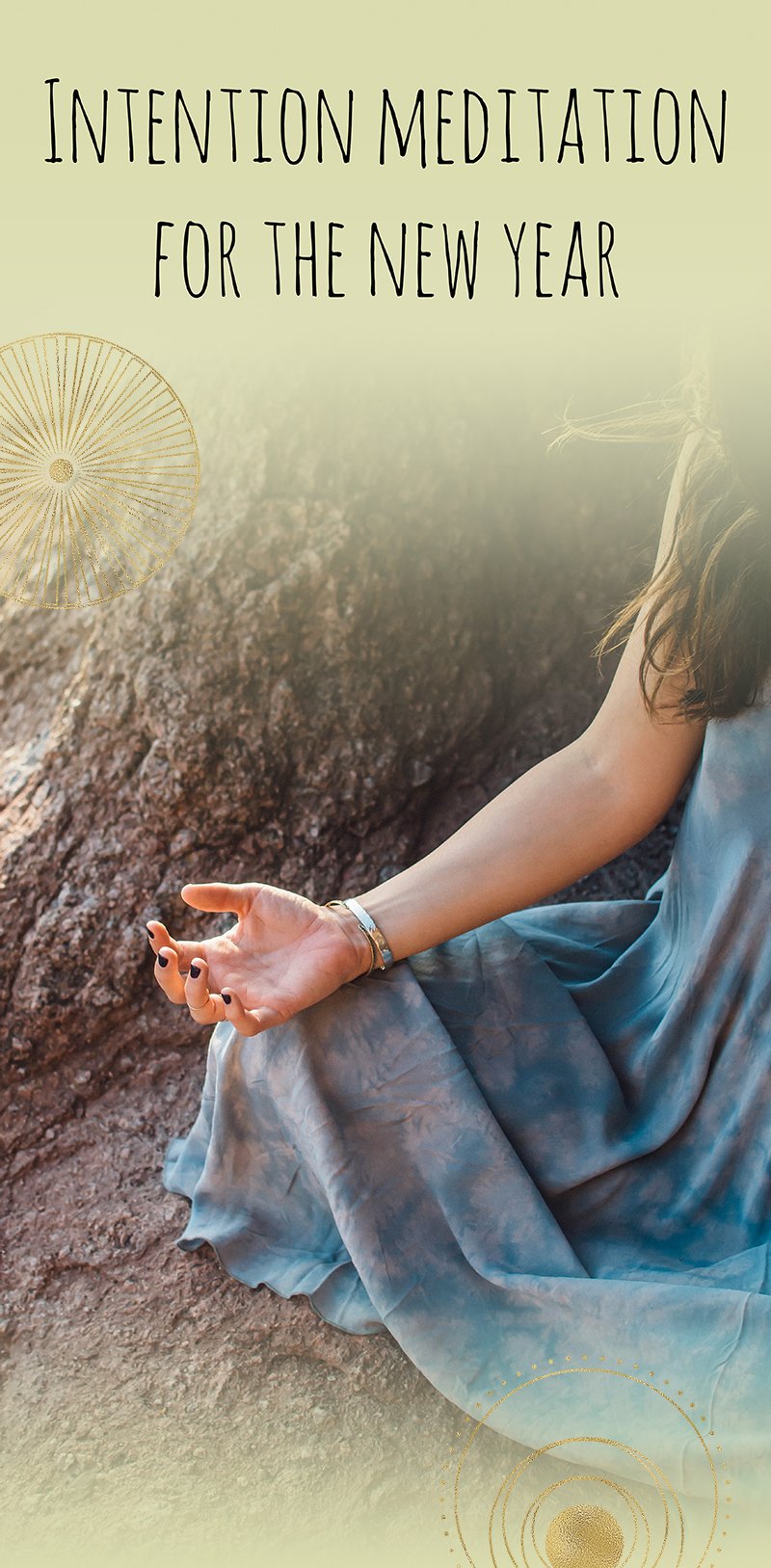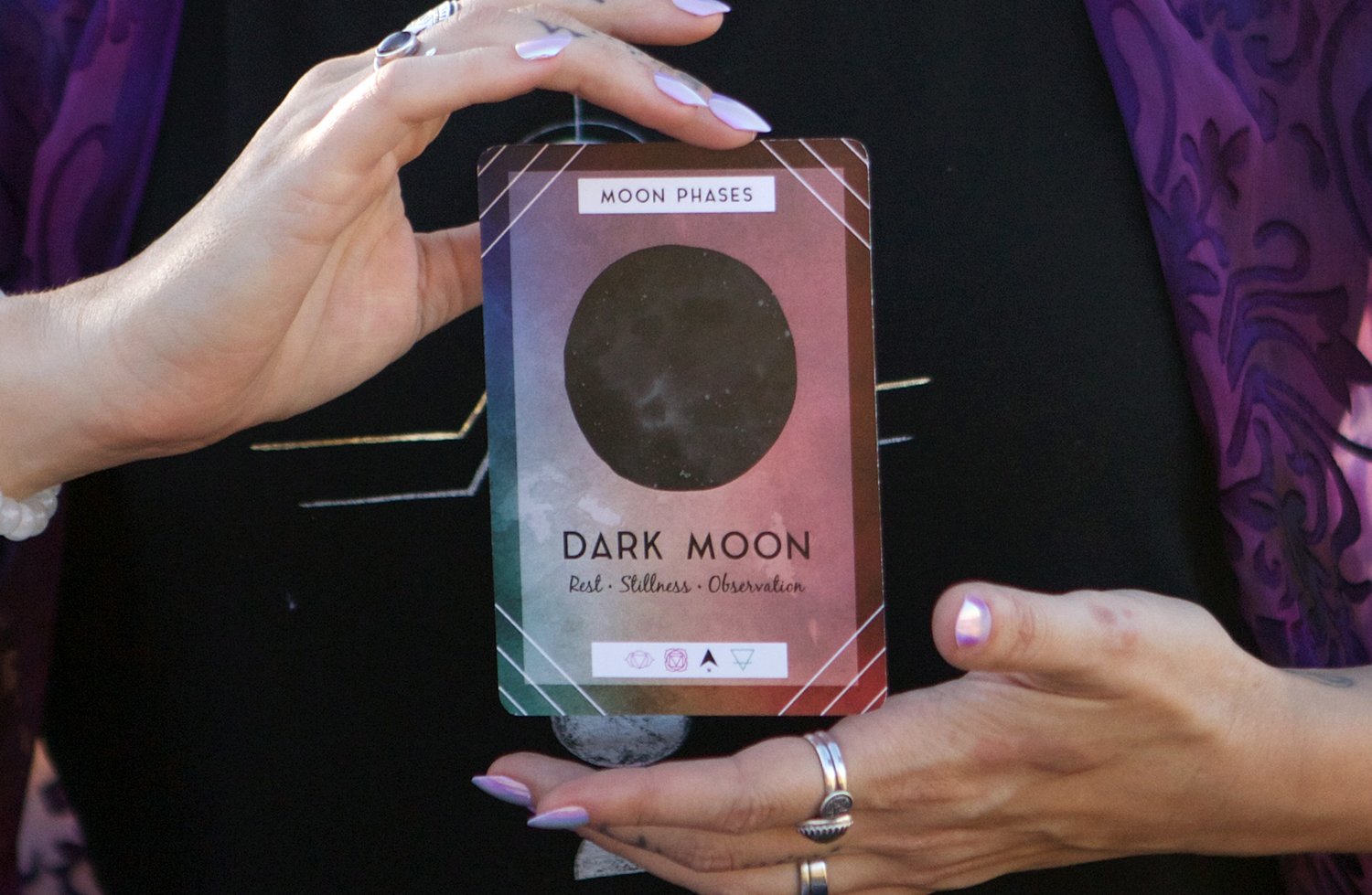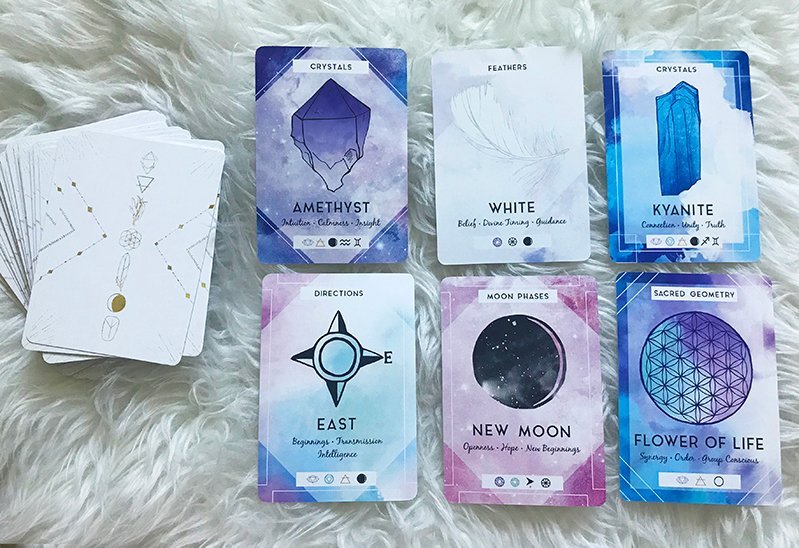How to Get Started with Spiritual Activism
If you’re reading this, you probably have a desire to make the world a better place. But you may feel like you’re not sure how to go about it in a way that aligns with your spiritual practice and values.Your spiritual practice and your activism aren’t separate, they’re one. They can be, and I think they should be— because the world needs you, as an activist, to show up as a spiritual being...and as a spiritual being, to show up as an activist.
If you’re reading this, you probably have a desire to make the world a better place. But you may feel like you’re not sure how to go about it in a way that aligns with your spiritual practice and values.
Your spiritual practice and your activism aren’t separate, they’re one. They can be, and I think they should be— because the world needs you, as an activist, to show up as a spiritual being...and as a spiritual being, to show up as an activist.
This means that not only are we meditating on healing the world, manifesting collective healing, and whatever other healing practices you have…but we’re also bringing that work into how we show up in the world as agents for change. We show up as our whole, spiritual selves when we call our senators and representatives. When we march, when we protest, when we volunteer, when we donate, when we organize, when we listen, when we post on social media.
That is spiritual activism.
COMPASSION
One really important piece of spiritual activism is compassion for yourself and for others. It’s really easy and often justified, to get caught up in your feelings and forget that the person you’re engaging with is also a human being. A human being who may be really offending you right now, but still a human being.
Remember that your feelings are justified. And of course, you don’t have to continue to engage with someone who is hurting you. But remembering some of the truths that are likely part of your spiritual practice, like compassion for all and the idea that at the core of it, we are all one, is just as important in these situations as it is in others.
ANGER
Ask yourself:
How do I want to feel?
How do I want others to feel around me?
List these answers out, and think about how they apply to your activism. If you want to feel inspired, open, safe, joyful, free, loved, whatever it is — you probably want other people to feel that way around you, too.
How can you approach your activism in a way that holds space for that? How can you approach your activism in a way that makes yourself and the people around you feel that way the majority of the time?
A note about anger: you probably want to create change around two things: things that break your heart, and things that make you angry. In some dialogue about spirituality, anger is bad. It’s something to be stifled and ignored.
But anger is human, and I think the only thing that makes it bad is repressing it. You’re going to be angry about injustice. It’s what we do with our anger, how we express it, and how we channel it that can help or hurt us.
So instead of repressing your anger or using it to lash out at people, I invite you to channel your anger into productive change, remembering that compassion and anger aren’t mutually exclusive.
START WITH YOU
When it comes to activism, start with you. It can be hard to wrap your head around at first but understand that you are not separate from the problem. You are not separate from these oppressive systems.
As a white person, racism isn’t about someone else. It’s about me.
As a cisgendered person, violence against transgender people isn’t about someone else, it’s about me.
The list goes on.
Ask yourself: in what systems am I an oppressor?
You can be oppressed in certain systems, like gender, and be the oppressor in others, like race.
This is where we get into the idea of privilege.None of this is about berating yourself for being a bad person or being complicit in these systems. You’re not a bad person! But the point of this being the first step is that when we know better, we do better. But we can’t do better if we don’t immerse ourselves in the “know better” step first.
Ask yourself: what privileges do I hold?
(Ideas: able-bodied privilege, white privilege, cisgendered privilege, straight privilege, thin privilege, in your country legally, etc.)
Take some time to really think about how those privileges manifest in your life and how they’ve become systems of belief. For example, what beliefs have you absorbed about people who don’t hold the privilege of being documented, or who don’t hold thin privilege?
What can you do to root down, shift those beliefs (which always manifest into actions even if you may not realize it!), and create more equality in your own life?
How is this spiritual activism? I think it comes back to the idea that healing yourself is healing for the world. I think most of us can probably get behind that. In this sense, cleaning up your own baggage, the ways in which your hurt and oppress is the most important thing we can do.
RELEASE
These days in this political climate I think it’s really important to have an embodiment practice to help you release trauma, anger, and other emotions you’re storing up from your cells. Tapping, breathwork, and a good old-fashioned scream are great ways to release.The practice can look like anything you need it to, but choose something that’s a physical release.
What Are the Doshas & How to Determine Yours
Ayurveda is known as the sister science to yoga. It’s a traditional Hindu system of medicine developed in ancient India, based on holistic integration of mind and body for optimal balance and health.The word literally translates to life science or knowledge, showing Ayurveda’s holistic approach to health. Unlike Western medicine, Ayurveda focuses on food and lifestyle, rather than medication, and prevention to help you get healthier before you get sick.
Ayurveda is known as the sister science to yoga. It’s a traditional Hindu system of medicine developed in ancient India, based on holistic integration of mind and body for optimal balance and health.
The word literally translates to life science or knowledge, showing Ayurveda’s holistic approach to health. Unlike Western medicine, Ayurveda focuses on food and lifestyle, rather than medication, and prevention to help you get healthier before you get sick.
Ayurvedic Doshas
Doshas are the different types of energy in your body. Each dosha is associated with different elements and qualities, which I’ll get into below.
We’re each born with a specific dosha constitution, or makeup. We can learn a lot about what’s best for our bodies by understanding our our dominant dosha constitution.
There are three doshas: Vata, Pitta, and Kapha. Each of us has all three doshas within us, but we are typically dominant in one or two doshas. The qualities of each of these doshas manifest in your mental, physical, and emotional bodies (remember that holistic approach I talked about above!).
Vata is composed of space and air. Its qualities are dry, light, cool, rough, subtle, and mobile. You may be more Vata if you…
Tend to get stuck in your head or get more anxious energy
Have a lot of active, creative energy
Have dry or brittle skin and hair
Tend to run cold
Get constipated easily
Sometimes feel “spacey”
Have a thinner, lighter frame
Pitta is composed of fire and water. Its qualities are oily, sharp, hot, light, fleshy smelling, spreading, and liquid. You may be more Pitta if you…
Have active digestion
Usually run hot
Have oilier skin
Have to eat regularly and may get lightheaded or cranky if you miss a meal
Have a more fiery, aggressive personality
Get sweaty easily
Are a leader
Kapha is composed of water and earth. Its qualities are unctuous, cool, heavy, slow, smooth, soft, dense, viscous, and stable. You may be more Kapha if you…
Tend to need more sleep
Have a heavier frame
Have dense, thick hair
Move more slowly
Tend to get excess mucous
Are fairly laid-back
Are well-grounded
Are an empath or very sensitive person with a big heart
These are general guidelines. I recommend taking this quiz from Banyan Botanicals to find out for sure!
How to balance your Dosha
So you’ve discovered your dosha constitution. Now how do you balance it?Ayurveda uses the principle of like increases like, and therefore you can look to opposites as medicine.For those of us more dominant in Pitta energy, you can balance that Pitta by focusing on:
Sweet, bitter, and astringent tastes (think sweet potatoes and basil for sweet, turmeric and cumin for bitter, avocado and apples for astringent)
Cool and dry environments
Cultivating practices that help you go with the flow rather than force
Fresh, cooling foods
A cooling, relaxing yoga practice
For those of us more dominant in Vata energy, you can balance that Vata by focusing on:
Sweet, sour, and salty tastes (think dates and cashews for sweet, lemon and pickles for sour, and celery and sea salt for salty)
Calm, grounding environments
Stabilizing routines
Wetter, warmer climates
Warming, mushy foods like kitchery and soup
Doing one thing at one time (not multitasking)
Regular meditation
A warming yoga practice that cultivates fluidity and is easy on the joints
For those of us more dominant in Kapha energy, you can balance that Kapha by focusing on:
Pungent, bitter, and astringent tastes (think onion and garlic for pungent, turmeric and cumin for bitter, and avocado and apples for astringent)
A warm, dry climate
Warming, light foods (nothing too heavy)
An active routine including things like biking, running, and hiking
A more challenging, intense yoga practice in a warm environment
Learn more about the elements that make up the doshas from The Ritual Deck (pictured).
Resources for further study
As you can imagine, Ayurveda is a complex, in-depth system that you’re not going to learn in one blog post. If you’d like to go deeper, I recommend checking out some of these resources:
Ayurveda: The Science of Self Healing by Dr. Vasant Lad
The Complete Book of Ayurvedic Home Remedies: A Comprehensive Guide To The Ancient Healing of India by Dr. Vasant Lad
Ayurveda by Sahara Rose
The Everyday Ayurveda Cookbook by Kate O’Donnell
Getting Started with Intuitive Eating // 6 Tips
Most of us are inundated with conflicting messages about food for our entire lives.We’re told to count calories, to eat certain portions of this or that, that this food is amazing for you and this food should be avoided at all costs.We’re taught to trust everything but ourselves when it comes to food (and actually, this is true in general, too!).Intuitive eating is a kind and compassionate return to trusting yourself with food. It’s an anti-diet way of eating that focuses on connecting with your intuition.What does your body need? What would truly nourish your mind, body, and soul in this moment?The truth is, your body knows what you need. You just need to listen to it!
Most of us are inundated with conflicting messages about food for our entire lives.
We’re told to count calories, to eat certain portions of this or that, that this food is amazing for you and this food should be avoided at all costs.
We’re taught to trust everything but ourselves when it comes to food (and actually, this is true in general, too!).Intuitive eating is a kind and compassionate return to trusting yourself with food. It’s an anti-diet way of eating that focuses on connecting with your intuition.What does your body need? What would truly nourish your mind, body, and soul in this moment?
The truth is, your body knows what you need. You just need to listen to it!There are 10 simple principles of intuitive eating from one of the leading books on the subject, Intuitive Eating.
1. Reject the diet mentality. We’re inundated with information about diets from the time we're kids. Weight Watchers. South Beach. Atkins. Paleo. Keto. Grain-free. They’re all based around the idea of restricting food. How would it feel to reject the idea that you have to eat other than how your body naturally wants to?
2. Honor your hunger. When you feel hungry, eat. When you feel satisfied, stop. It’s as simple (and as difficult) as that.
3. Make peace with food. Remember that food is not your enemy, to be fought with. It’s fuel, it’s nourishment that is here to support you and help you live the life you want to live.
4. Challenge the food police. These are the rules like “You have to eat three meals a day,” “carbs are bad for you,” and you’re “good” for eating a salad for lunch. You don’t need the food police. You can trust your body.
5. Respect your fullness. This is about eating more consciously. Listen to your body’s signals that you feel full and satisfied. Try pausing halfway through eating to check in with how you feel.
6. Discover the satisfaction factor. You may be physically full but still not satisfied. That’s okay. Discovering the satisfaction factor is realizing that when you eat what you want, you’ll likely feel more pleasure, more satisfaction, and overall more content.
7. Honor your feelings without using food. Sometimes we use external things like food to numb out when we don’t want to feel what we need to feel. Try finding other ways to cope and comfort yourself that don’t involve eating.
8. Respect your body. We’re taught from a very young age to have a lot of judgment around our bodies. Many of us have a constant critical dialogue running in our heads, especially around food. Learn to love and accept your body as it is right now.
9. Exercise - feel the difference. Moving your body isn’t about exercising to punish yourself, or burn enough calories so you can eat the thing you want, or to look a certain way. Reframe moving your body as a way to feel your best and nourish yourself.
10. Honor your health. Be gentle. Connect with how certain foods make you feel and remember that it’s about the consistency of what you eat over time— one meal or one day of eating won’t cause you to be unhealthy or gain weight.
Ready to get started? Below are six tips for intuitive eating.
1. Take an inventory of your social media presence.
Are you following any accounts that are helping create a toxic relationship with food? Do you follow fitness accounts that make you feel bad about yourself whenever you see their photos pop up in your feed?After you purge your social media feed, can you bring in some more body-positive Instagrammers whose feeds and relationship with food inspire you to have a more loving relationship with your body and your plate?
2. Discover your physical signs of hunger and fullness.
What does it feel like to be hungry? What does it feel like to be full? To start connecting to these feelings, try placing one hand on your belly before you get to the table and taking a few deep breaths into your stomach. Your belly is where you feel hunger and fullness first, so taking a moment before and after eating to connect to those feelings can help you eat more intuitively.
3. Give food your full presence.
Oftentimes, we’re eating on the go or while we’re reading, scrolling on Instagram, or working. See if you can give food your full presence. Eat each meal slowly and mindfully without distractions, really savoring each bite, chewing it thoroughly, and paying attention to when you feel satiated. Think of it as an eating meditation!
4. Notice your food self-talk.
Is there a voice in your head that declares you “good” for eating vegetables and “bad” for eating dessert? (Spoiler alert: the answer is most likely yes.) Start to notice those thoughts (it can be helpful to write them down) and reframe them.For example, a thought like “Eating dessert makes me lazy and weak” can become “Eating dessert has nothing to do with who I am as a person. Eating sweets fills my soul and I am free to eat them as I like.”
5. Notice how foods make you feel.
Start to make the connection between certain foods and feelings. For example, certain foods may make you feel:
Energized
Sluggish
Cranky
Creative
Uninspired
Light
Tired
Or a variety of other feelings.
6. Don’t forget pleasure and satisfaction.
We aren’t machines. Food is deeply connected to memory, to pleasure, to joy. We don’t always need to eat the “healthy” thing. The key is to remember that those foods you often restrict and then binge on are limitless. You don’t need to binge on them because you can always eat more tomorrow. There are no restrictions. When your body wants dessert, see if you can offer it dessert without judgment or attachment to what you think “eating dessert” may mean.Here are some journaling questions that can help you get started with a more intuitive way of eating:
Think about your current relationship with food. Describe it and then describe how it makes you feel.
What would you like your relationship with food to look like and how would you like to feel about food?
What foods make you feel amazing?
What would eating mindfully look like for you?
What is one thing you can do today to start eating more intuitively?
How to Open Your Sacral Chakra & Know When it's Blocked
The sacral chakra, Svadhisthana, is one of the chakras I personally feel most connected to. I think in the spiritual community, we can sometimes forget how important the lower chakras are, but remember: you are a spiritual being in a physical body! So the chakras we tend to associate with our physical bodies more, like the root, sacral, and solar plexus chakras, are just as important as the higher chakras like your crown and third eye.The sacral chakra is your center of creativity, sexuality, and feeling. It’s ruled by the element of water, and it’s located at the center of your low belly about three inches from your navel.
The sacral chakra, Svadhisthana, is one of the chakras I personally feel most connected to. I think in the spiritual community, we can sometimes forget how important the lower chakras are, but remember: you are a spiritual being in a physical body! So the chakras we tend to associate with our physical bodies more, like the root, sacral, and solar plexus chakras, are just as important as the higher chakras like your crown and third eye.
The sacral chakra is your center of creativity, sexuality, and feeling. It’s ruled by the element of water, and it’s located at the center of your low belly about three inches from your navel.
When this chakra is open, you’re able to feel deep pleasure in your life. You’re able to really feel the world around you and you’re connected to your emotions. You’re able to flow, expand, have healthy relationships with others, and use your creativity.
When this chakra is blocked, it may manifest as:
Disconnection from your sexuality or being ruled by your sexuality
Experiencing a lack of pleasure in your day-to-day life
Inability to connect with your creative energy
Feeling stuck in a certain feeling or mood
Dependency on a person or substance that gives you pleasure
Inability to feel your feelings or being too ruled by your emotions
If any of those sound like you, don’t worry. Our chakras are fluid, just like us, and they can change from day to day. Scroll down to get 10 ways to unblock your sacral chakra to connect with your creative and emotional flow.
The card shown in the image is from The Ritual Deck.
Get creative
This is one of my favorite ways to open this chakra! Even if you don’t feel creative in the moment, just start creating something. It might surprise you how your energy starts to flow! Try painting, writing, drawing, coloring, collaging, creating your own movement practice, or experimenting in the kitchen.
Use scents
My go-to essential oils for opening your sacral chakra are:
Tangerine
Orange
Ylang ylang
Patchouli
Bergamot
Sandalwood
Rosewood
Try massaging your low belly with one or more of the oils (diluting with a carrier oil as needed), diffusing them in your space, or placing a few drops in your bath (which, bonus points, connects you with the element of water!).
Dance
I know everyone says this, but seriously, dance like no one’s watching (because no one is!). Put on your favorite music and move intuitively however feels good for you. If you’d like, incorporate some hip circles to help you get into your low belly.
Breathing into your low belly. As you’re laying down, place your hands on your low belly. With your inhale, feel your hands rise as you flood the belly with breath, sending your life force energy to this chakra. As you exhale, feel your sacral center soften, expand, and open.
Use crystals
Some crystals that help open your sacral chakra are:
Citrine
Carnelian
Orange aventurine
Orange calcite
Goldstone
Tiger’s eye
Sunstone
Peach selenite
Try sleeping with them, meditating with them on your low belly, placing them around your home, or placing a little tumbled stone in your pocket to carry with you all day.
Meditation
Bring your palms to the center of your sacral chakra in your low belly, and start to take deep belly breaths into that space. With each inhale, visualize a little orange ball of light over your sacral chakra. With each exhale, visualize it opening, softening, and expanding until your entire body is surrounded by a beautiful aura of pure orange light.
Check out my Energy Reset Meditation Bundle here.
Use affirmations
Write them down, say them every day, make them the background of your phone—the options are endless! Choose an affirmation from the list below or create your own:
I am fully in my body.
Creative and sexual energy runs through me.
I am in love with life.
I am a passionate being.
I am deeply connected to my feelings.
I honor my feelings.
I honor my pleasure.
Yoga poses
Poses that stretch your hips are really helpful for opening your sacral chakra. Some of my favorites are:
Low lunge
Goddess pose
Reclining cobbler’s pose
Wide-legged standing forward fold
Frog pose
In each pose, just remember to breathe into your low belly!
Get to the root of the blockage
One of my favorite ways to get to the root of a chakra blockage is pulling tarot cards for these two simple questions:
Why is my sacral chakra blocked?
Advice for moving through the blockage
Tarot cards have such a beautiful, helpful way of getting to the heart of the matter. If you’re feeling like there’s a deep, underlying shadow or issue holding you back from fully stepping into your sexual and creative power, try this.
Play with color
The color associated with Svadhisthana is orange. Try bringing more of this color into your life by lighting orange candles, eating orange foods, wearing orange clothes, or painting your nails orange.
Intention Meditation for the New Year
Each morning we rise with the promise of being able to start over, and no morning is better suited for a reset than New Year’s Day. The New Year is a time of rebirth and so, finds many of us setting our intentions for the next year. The trick is setting intentions that feel authentic to who you are and promise to bring real change to how you approach every aspect of your life.
Each morning we rise with the promise of being able to start over, and no morning is better suited for a reset than New Year’s Day. The New Year is a time of rebirth and so, finds many of us setting our intentions for the next year. The trick is setting intentions that feel authentic to who you are and promise to bring real change to how you approach every aspect of your life.
Intentions Are Naturally Expansive
Intentions truly have no limit. If you decide that you would like to feel balanced and happy every day, there’s no end to that. You also can enjoy the flexibility of not having to hit a degree of happiness each day. If today you’re just a little happy, while yesterday you felt like you were flying, you’ve still achieved your intention.
Goals are wonderful to have, and it’s tradition at this point to set New Year’s Resolutions. But here’s the thing: goals can make you feel like you’ve failed at something. If you don’t meet a goal, it’s easy to feel bad about missing it.
So, if you’re a more goal-oriented person, start with setting an intention, then set your goal, and be sure to add some self-compassion to keep things positive.
Have No Regrets
It’s natural to look at things that you didn’t do, relationships that came to an end, or other events that you perceive as being negative. But I challenge you to shift your thinking about last year so that you can set yourself up for success this year.
Ask yourself the following questions:
How was last year's healing?
What freedoms do I feel now that I’ve let some of the junk go?
When did my choices honor my true self?
What bad habits did I overcome?
How far have I come with ____?
A Meditation Script for Setting Intentions
The following script will guide you through a healing meditation that focuses on setting intentions. Use it as a rough guide in your practice or record yourself reading it on your phone so you can play it back whenever you’d like.
Before you begin, have an intention in mind, either a new one or one that you’d like to renew.
Taking a deep breath in, I invite you to close your eyes and notice your body in this space.
Notice how the breath moves in through your nose and out again. Let’s take ten nourishing breaths here.
As you continue to breathe, notice that you can direct your attention anywhere you’d like it to go.
I invite you to draw your attention to the center of your head, imagining going deep into the center of your consciousness, about eye level. Any time your mind wanders, bring your awareness back to this spot.
Still breathing, I invite you to recall the last year. Is there anything that you wish to release?
If so, imagine that energy, memory, or even regret coming together in a ball of light floating in front of you. Allow this process to occur at a pace that’s comfortable.
What color is that energy? Do you feel the old year releasing out of different parts of your body?
What does it look like?
Still breathing, I invite you to release that ball of energy. Perhaps it floats off into the sun to be burned up in its rays. Maybe you imagine an angel coming down and carrying it safely away. Or maybe it just disappears.
As you watch this energy leave, how do you feel? Take a few moments to enjoy the expansiveness of this release.
Now, let’s fill in those spots that housed that old energy.
Consider an intention you would like to set – either a new one or one you’d like to renew.
Maybe you imagine writing the intention down in your journal. Perhaps you imagine what it would be like to hear it spoken aloud by a favorite person.
If this intention also looked like a ball of energy or light, what color would it be?
Would it be warm or cool?
I invite you to imagine a beautiful funnel over your head. This golden funnel simply floats above your head and invites only the best, most beautiful energy into your body.
At this time, imagine that funnel draws the energy of your intention into your body, filling up all the empty spaces where the old energy from last year resided.
If you feel a physical sensation, like a tingling or a twitching, that’s okay. Your body is simply responding to the shift in energy.
When it feels as if this energy has filled your body, take a moment to close off your funnel, knowing you can reopen it at any time to invite only the best energy into yourself.
Let’s take another ten nourishing breaths here and sit in this space with renewed, intentional energy.
When you are ready, you may end your meditation at your own pace.
If you enjoyed this meditation and want to learn more about meditation check out more blog posts on meditation here.
How to journal with the moon phases + 10 journal prompts
Your mood, physical body, and spirit body all go through phases, and journaling with the moon is an ideal way to track all of these. You may find that you’re more synced with the moon than you thought!
Your mood, physical body, and spirit body all go through phases, and journaling with the moon is an ideal way to track all of these. You may find that you’re more synced with the moon than you thought!
Why You Should Try Moon Journaling
Wouldn’t it be nice to know which moon phases make you feel the most intuitive, expressive, or reserved? The way you relate to each moon phase is reflective of you alone and experiences will vary from person to person. You may find that your diet, intuition, and menstruation are affected by the phases of the moon. Keeping a moon journal will enable you to track any patterns to better understand all of your cycles.
How Often Should You Write in Your Moon Journal?
Take notes in your moon journal as often as you like! Journaling once a week will ensure that you hit each of the main phases of the moon: new moon, waxing moon, full moon, and waning moon. Moon journaling twice a month, on the full and new moon, can also be enlightening.
Starting out, I suggest making a quick note in your moon journal for 30-60 consecutive days. Making a quick note daily, in the beginning, will help you catch any obvious patterns right away.
What You’ll Need to Start Your Moon Journal
You’ll need a moon phase calendar, digital, or a hard copy.
You’ll also need a writing utensil and a journal or notepad. That’s it!
10 Topics for Moon Journaling
Here’s a list of suggested moon journaling topics. Read through the whole list. What topics call out to you the most? You can journal on all or some of these topics, it’s completely up to you.
Start your moon journaling by recording the date, the moon phase, and the zodiac sign for the phase (optional).
Record how you feel emotionally. Check-in, do you feel content, happy, sad, jealous, excited, energized, grateful, anxious, or angry? Record your mood for the day or overall week. This can be as simple as writing one word.
Record how you feel spiritually. How connected and intuitive do you feel? If you meditate regularly, was it easy for you to “drop-in” or did you find your meditation to be a struggle (this is always a good indicator of my spiritual well-being).
Record how you feel physically. How are you sleeping, your energy levels, and your diet? Are there any particular foods you're craving? If you exercise regularly, was your activity easy or more forced?
Record when you start and end your menstrual cycle. You may also decide to notate what each menstrual cycle feels like to help unearth patterns. If you’re particularly in-tune with your cycle or trying to conceive (or not conceive!) you might also find it helpful to track your ovulation with the moon.
Note any goals, intentions, and manifestations you’ve initiated and when they manifest. New intentions are best to set on a new or waxing moon.
Note any habits, people, outcomes, or things you’re trying to let go of and when you feel you’ve shed them. Releasing and letting go is best to initiate during a full or waning moon.
Notate the zodiac sign the moon is in. If you want to take your moon journaling to the next level you can notate what zodiac sign the moon is in. The moon is always positioned in a zodiac sign and cycles through them every 2-3 days. The sign the moon is in will also have an effect on you too. Try looking for even broader patterns by notating what sign the moon is in when you journal. I like this online resource for tracking the zodiac sign for each moon phase.
Track your triumphs! Did something happen that was totally out of the blue and made your day? Maybe you received an unexpected promotion, landed your dream job, or ran into an old friend, write it down!
Track your worst days. Did you have one of those days where nothing seems to go as expected and you just can’t shake it? These days aren’t as fun, but being able to estimate when they may come up can sure be helpful.
Note your dreams. Dream journaling is an insightful activity on its own. Notating the moon phase for your dreams can shed even more light on what your subconscious is trying to tell you. You might be able to identify times when your dreams are most active so you can plan to have a notepad ready on your nightstand.
Moon journaling can be as simple or in-depth as you’d like and can be tailored to suit your needs and schedule.
4 Ways to Honor the Winter Solstice
The winter solstice marks the longest night of the year, and so we traditionally associate it with darkness.But it’s also the beginning of the waxing phase of the year, as the days start to get longer and nights start to get shorter. We are reminded that light always follows dark. The balance begins to shift, the wheel of the year turns back again.
The winter solstice marks the longest night of the year, and so we traditionally associate it with darkness.
But it’s also the beginning of the waxing phase of the year, as the days start to get longer and nights start to get shorter. We are reminded that light always follows dark. The balance begins to shift, the wheel of the year turns back again.
This sabbat, also known as Yule, is a time for us to connect with our darkness and alchemize it into lessons, into medicine, for the year to come.
Below are some ways to honor this sacred holiday.
Journaling prompts
Create a quiet, safe space (candles are recommended!) and let yourself free write to the questions below with no editing. No one’s going to read your answers but you!
Write a love letter to your darkness.
What am I most ashamed of? How can I transmute this shame into a source of power and love?
What part of me do I want to feed and grow?
Tarot or oracle spread
Pull out your tarot or oracle deck and set the intention for your highest self tospeak to you through the cards. Give them a shuffle, and pull a card for each of the questions below. I recommend writing down the spread and the cards you pull, as well as your interpretations of them.
What shadow wants to work with me?
How does it want to be worked with?
Advice for moving through shadow
What wants to be born from my darkness?
Advice for birthing whatever needs to come through
Message from my inner child at this time
Lay out the cards in two rows of three like so. The deck featured here is The Ritual Deck.
Create an altar
Creating an altar is a beautiful way to honor any sabbat. Let this be an intuitive, creative process and place anything there that feels good to you! Some ideas to spark your creativity are:
Your Death and Temperance tarot cards
A Yule log or branch
Holly or mistletoe
An evergreen wreath to symbolize the wheel of the year
Any red, green, or white crystals that you’d like (I love carnelian for red, selenite for white, and moss agate or malachite for green)
Ash, frankincense, and any other sun herbs you like
Pine cones
White and silver candles
A representation of something in your shadow that you’d like to honor and alchemize this year
Painting
One of my favorite ways to work with my subconscious these days is intuitive painting. Get out your paints, paper, and allow whatever wants to come through you as you focus on the winter solstice and what it means to you. Try not to focus on how it looks— no one needs to see it but you!
After you finish, you could place it on your altar.
Below is an infographic with a visual representation of rituals for Yule
Want to learn more about the different sabbats on the wheel of the year? Click here to learn more about the wheel of the year and download your free wheel of the year printable.
6 Ways to Support Your Goddess Sisters
Our society has a long history of pitting women against each other. Of making us fear each other and compete with each other. Of creating division and separation between us.But we can choose to end that cycle. It ends with us. It ends with us every time we choose to uplift, love, and hold the women-identifying humans in our lives.
Our society has a long history of pitting women against each other. Of making us fear each other and compete with each other. Of creating division and separation between us.
But we can choose to end that cycle. It ends with us. It ends with us every time we choose to uplift, love, and hold the women-identifying humans in our lives.
Below are some ways to support the women in your life.
Hold space for them
Holding space isn’t just your regular conversation where we mostly just wait until it’s our turn to talk. There are a few important keys to holding space:
Give your full presence
Give your full presence with deep listening and eye contact. Your friends can tell when you’re not really there with them (and you can tell when your friends aren’t really there, too!). Put your phone to the side and really focus on what they’re saying.
Non-judgment
Offering non-judgment to others starts with doing your own work on not judging yourself. This may be part of your shadow work process—click here for 5 simple steps to help you get started with shadow work.
Asking questions without giving advice
Try not to give unsolicited advice. Asking helpful questions to deepen your friend’s understanding of her own situation is so much more helpful because it allows the answer to truly come from her—not you.
Facilitate their growth
Sometimes we get stuck in fear patterns. Sometimes we want to shrink out of our fullness, our magic, our bigness. When your sister is falling into her fear, wanting to shrink, help facilitate her growth. Help remind her of her magic. Don’t give her your permission to shrink.This is about being honest and constructive. This is about not always telling your friend what she wants to hear. They may not appreciate it at the moment, but they’ll likely appreciate your honesty in the long run.
Support their connection with their intuition
You give your community a beautiful gift when you support their connection with their intuition. Our society loves to make decisions based on logic alone, and looks down on things seen as “impractical.” But by validating your sister’s desire to listen to and make decisions based on intuition, you help shakti rise.
The Goddess Discovery Books are a great tool to use for improving your intuition and are even more fun to work through with a group of Goddesses!
Understand and respect their boundaries
Have a clear, open conversation with your sisters about their boundaries. What is an acceptable way to handle disagreements? What do they need from you to feel safe and supported in your friendship? What do you need from them to feel safe and supported in your friendship?
Strong boundaries can keep your relationships strong. Respecting each other’s boundaries can help set the expectation for strong boundaries in other, more difficult relationships as well.
Celebrate their successes
When they rise, you rise. It’s easy to feel threatened by the expansion of someone close to you but remember: it’s not a competition.The world is an abundant, infinite place and one woman having something you may want doesn’t mean you can’t have it, too. Celebrate their expansion, their growth, their wins.
Create community
Grow together. Meditate together, do moon rituals together, cast spells together, go to talks, or do courses together. Gather together and share wisdom. Gather together and connect with your intuition. Support each other by not allowing each other to stay stagnant.
Start out by implementing one of these tools each month to get used to doing it and add on from there. Before you know it your circle of supportive women will be flourishing!








